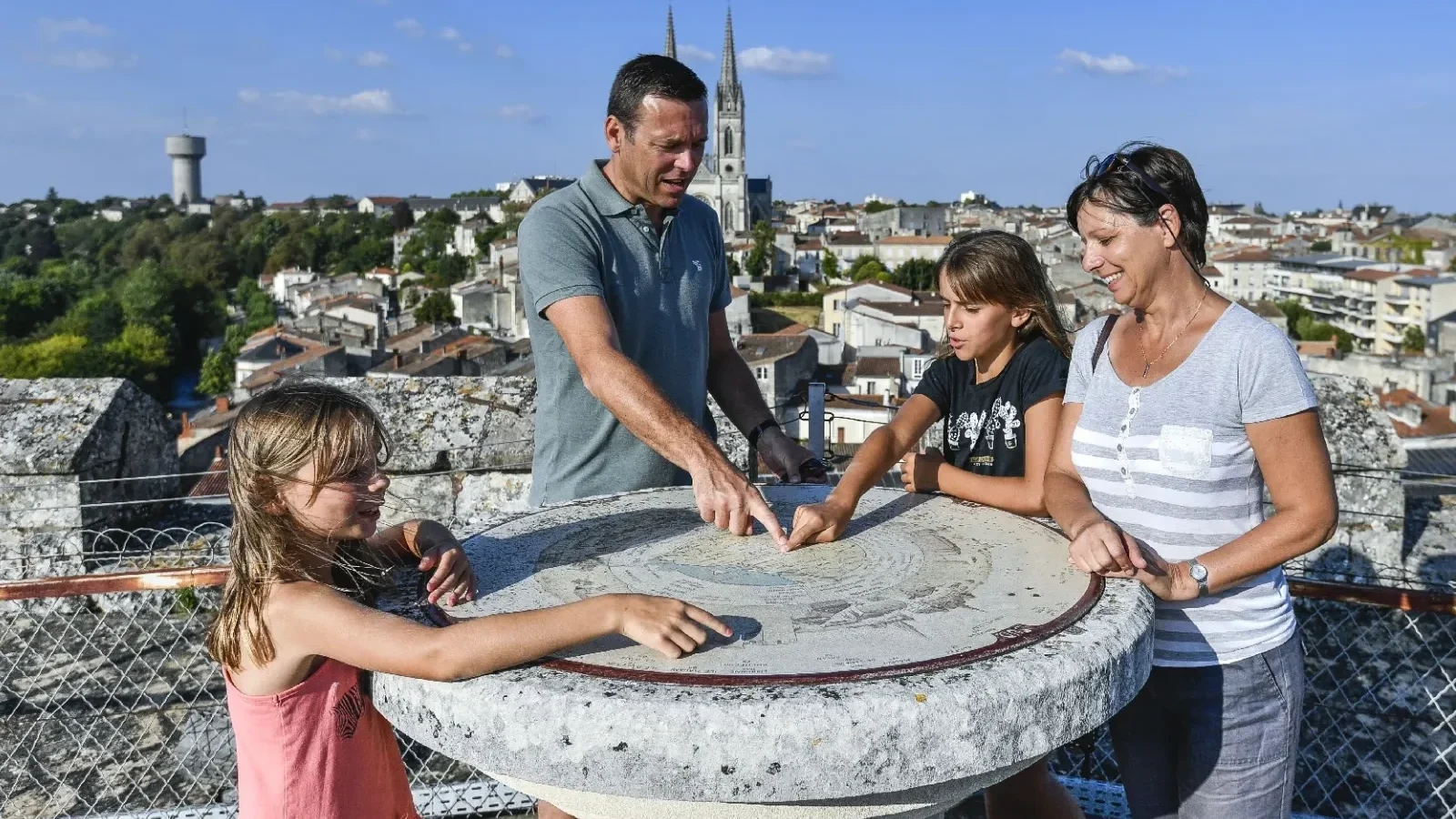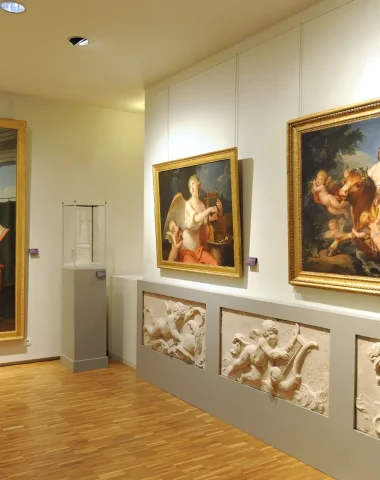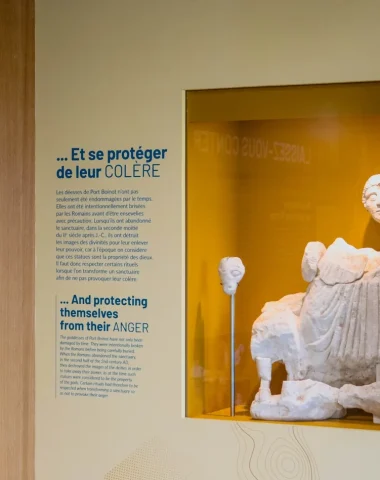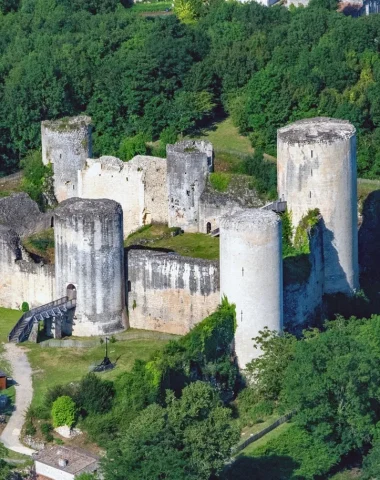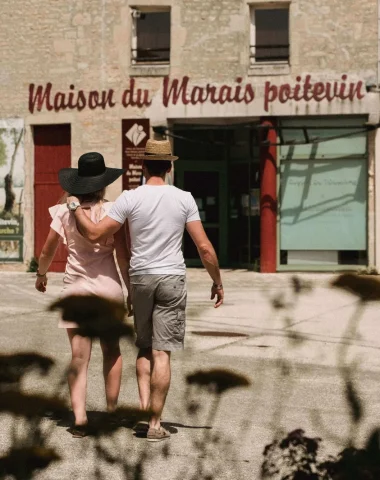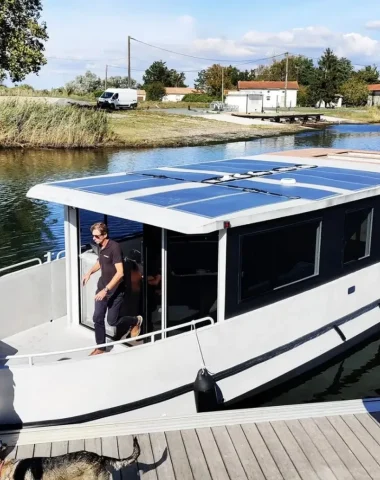Au bord de la Sèvre Niortaise, se dresse un donjon aux tours jumelles, situé autrefois dans un vaste quadrilatère délimité par une enceinte d’environ 700m. C’est le 1er édifice de Niort classé Monument Historique en 1840.
L’histoire du Donjon de Niort
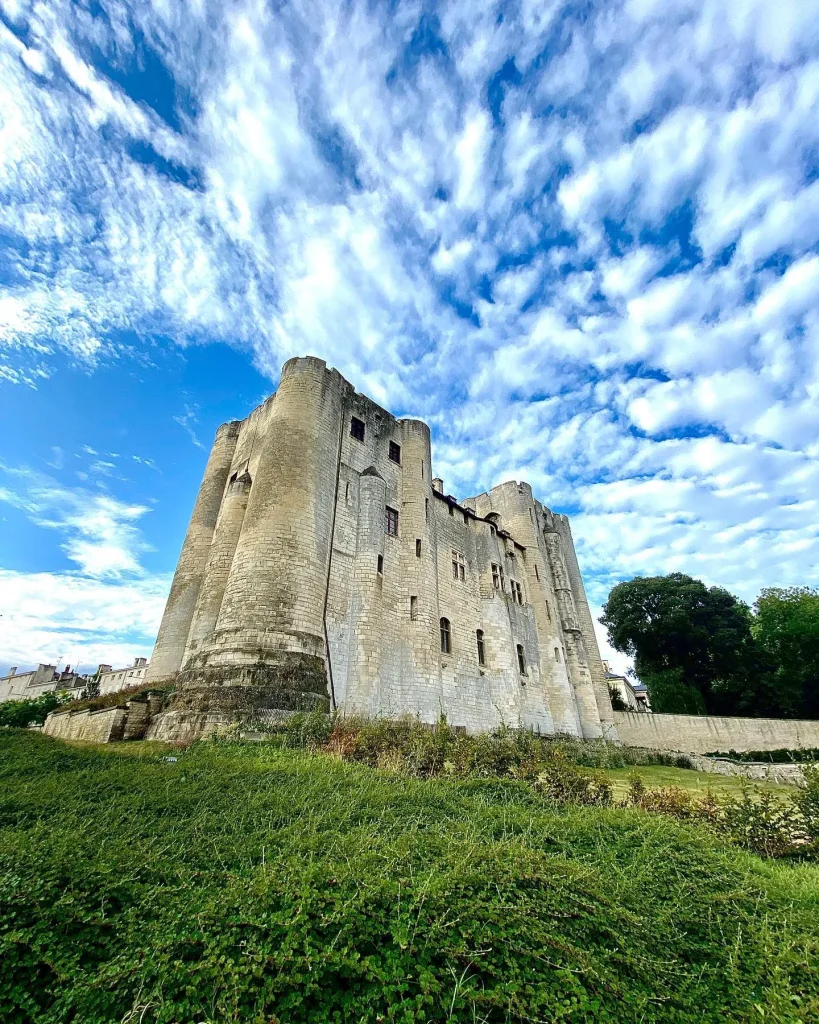
Le Donjon de Niort est le dernier témoin d’un ensemble fortifié construit entre la fin du XIIème siècle et la première moitié du XIIIème siècle. Ce monument a connu plusieurs fonctions. Dans un premier temps, celui de forteresse militaire, puis de lieu de résidence du capitaine des gardes du château avec une prison.
En 1154 Henri Plantagenêt devient roi d’Angleterre. Il étend son royaume sur tout l’ouest de la France grâce à son union avec Aliénor Duchesse d’Aquitaine. La ville de Niort occupant donc une place stratégique, le roi décida d’y bâtir une forteresse militaire défensive à partir de 1180.
Au XIIIème siècle, l’espace entre les 2 tours du Donjon est couvert, une grande salle centrale y est donc aménagée. À la fin du XIVème siècle, les fenêtres ont été agrandies et des cheminées ont été installées dans la grande salle seigneuriale. Le Donjon se doit d’être plus confortable car il devient petit à petit une résidence pour le capitaine des gardes du château puis des gouverneurs jusqu’au XVIIème siècle. Il perd peu à peu sa vocation militaire et abrite une caserne, des magasins et des cachots.
À partir du XVIIIème siècle, le Donjon devient une prison. On y envoie des équipages de marins anglais. Ils ont gravé des inscriptions sur les murs pour laisser une trace de leur passage. Elles sont toujours visibles aujourd’hui au musée. Des travaux de restauration seront lancés en 1820. En 1840, le Donjon est classé au titre des Monuments historiques et est laissé en gestion à la ville en 1870.
Finalement, le Donjon trouvera sa vocation de musée en 1896, lors du premier congrés national d’ethnologie organisé en France. Il abritera le premier musée du costume poitevin.
Exposition permanente “1 000 ans d’histoire”
L’exposition permanente “1 000 ans d’histoire” permet de retracer l’histoire du Donjon de Niort depuis sa construction jusqu’à aujourd’hui. Vous pouvez y retrouver une grande maquette, des dioramas (décors théâtralisés) et animations 3D qui permettront aux enfants, comme aux adultes, de mieux imaginer et interpréter ce qu’il a été autrefois. L’exposition est déployée sur 5 salles :
01. Salle d’accueil
La salle d’accueil se trouve dans la grande salle appelée “la aula”. Vous pourrez visionner un diaporama mettant en exergue la richesse du patrimoine touristique de la Communauté d’Agglomération de Niort. Deux grands panneaux vous permettront de comprendre l’évolution de la ville au fil de siècles.
02. Salle histoire
La salle histoire est dans la continuité du contenu de la salle d’accueil avec des panneaux explicatifs sur Niort et le Donjon au fil des siècles. Une maquette est présente pour découvrir la ville et son développement ainsi que ses monuments importants. La halle médiévale et l’ancien port de Niort sont évoqués par le biais de dioramas (décors théâtralisés). Sur un pupitre, les activités liées au port de la ville sont évoquées : commerce du vin, des épices, du poisson et des produits régionaux comme le miel ou les figues. Enfin, quelques objets trouvés lors de fouilles archéologiques sont aussi exposés dans une vitrine : bijoux, pièces de monnaie, céramiques.
03. Salle film
Dans cette salle, profitez d’une projection d’un film d’une animation en 3D pour voir l’évolution architecturale du Donjon étape par étape.
04. Salle Donjon
Dans la salle Donjon, un premier pupitre retrace l’évolution architecturale du Donjon ainsi que ses différents usages dont il a pris possession durant toutes ces années. Un film 3D vous aidera à visualiser les différentes étapes de construction du Donjon. Découvrez les graffitis de marins anglais qui sont gravés sur les murs et datent du XVIIIe siècle. Vous pourrez aussi observer plusieurs blocs de pierre qui présentent de manière concrète diverses techniques de taille de la pierre à l’époque médiévale.
05. Salle architecture
Dans la salle Architecture, vous pourrez compléter vos connaissances en comparant le Donjon de Niort aux autres bâtiments de son époque au niveau régional et national. Vous y trouverez également les vestiges des statues originales des déesses trouvées en 2018 lors des fouilles du sanctuaire antique de Port Boinot dont Épona déesse des équidés. Découvrez plus amplement son histoire dans les salles d’exposition de Port Boinot à l’espace Épona-secrets de nos patrimoines.
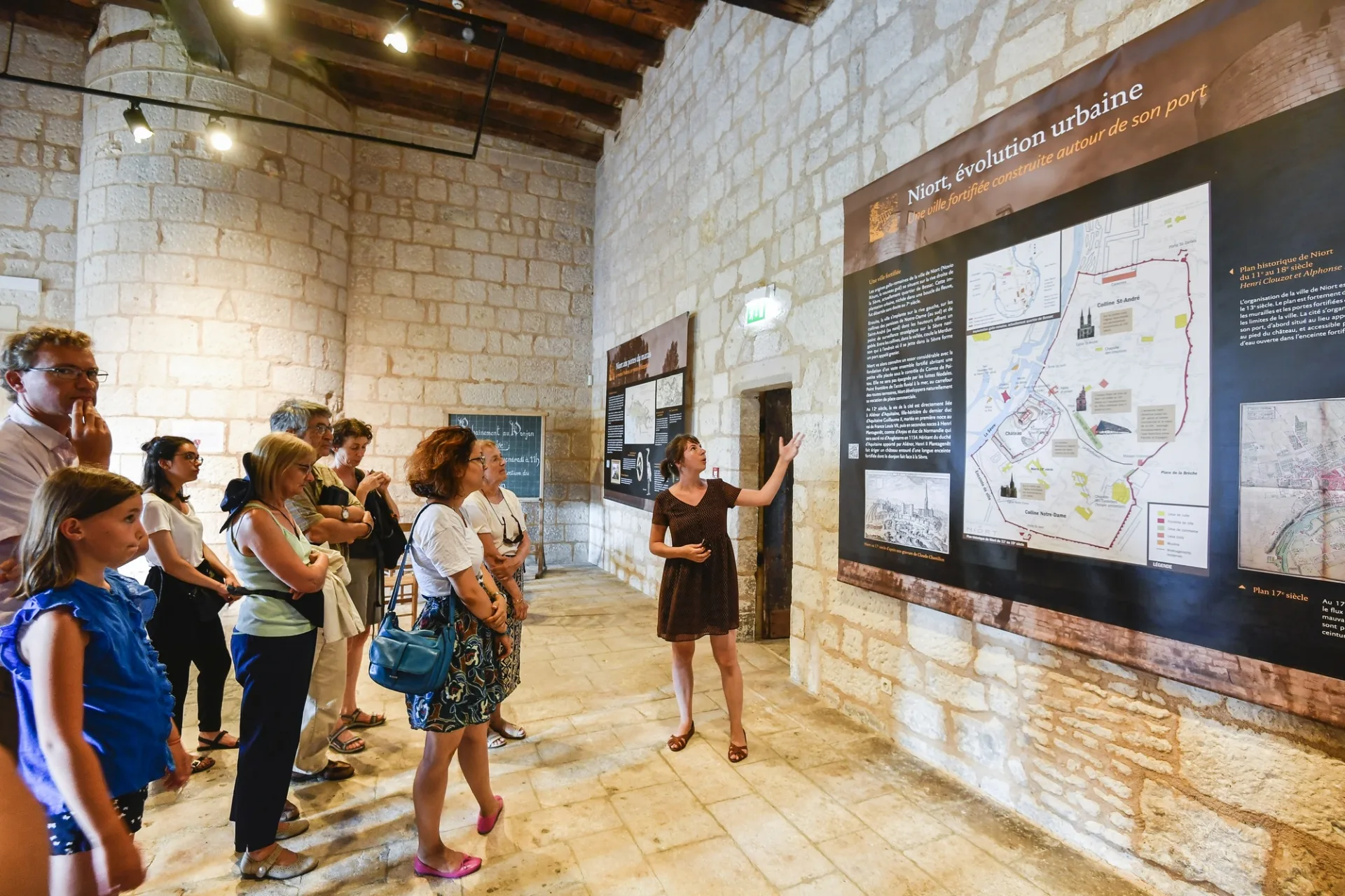
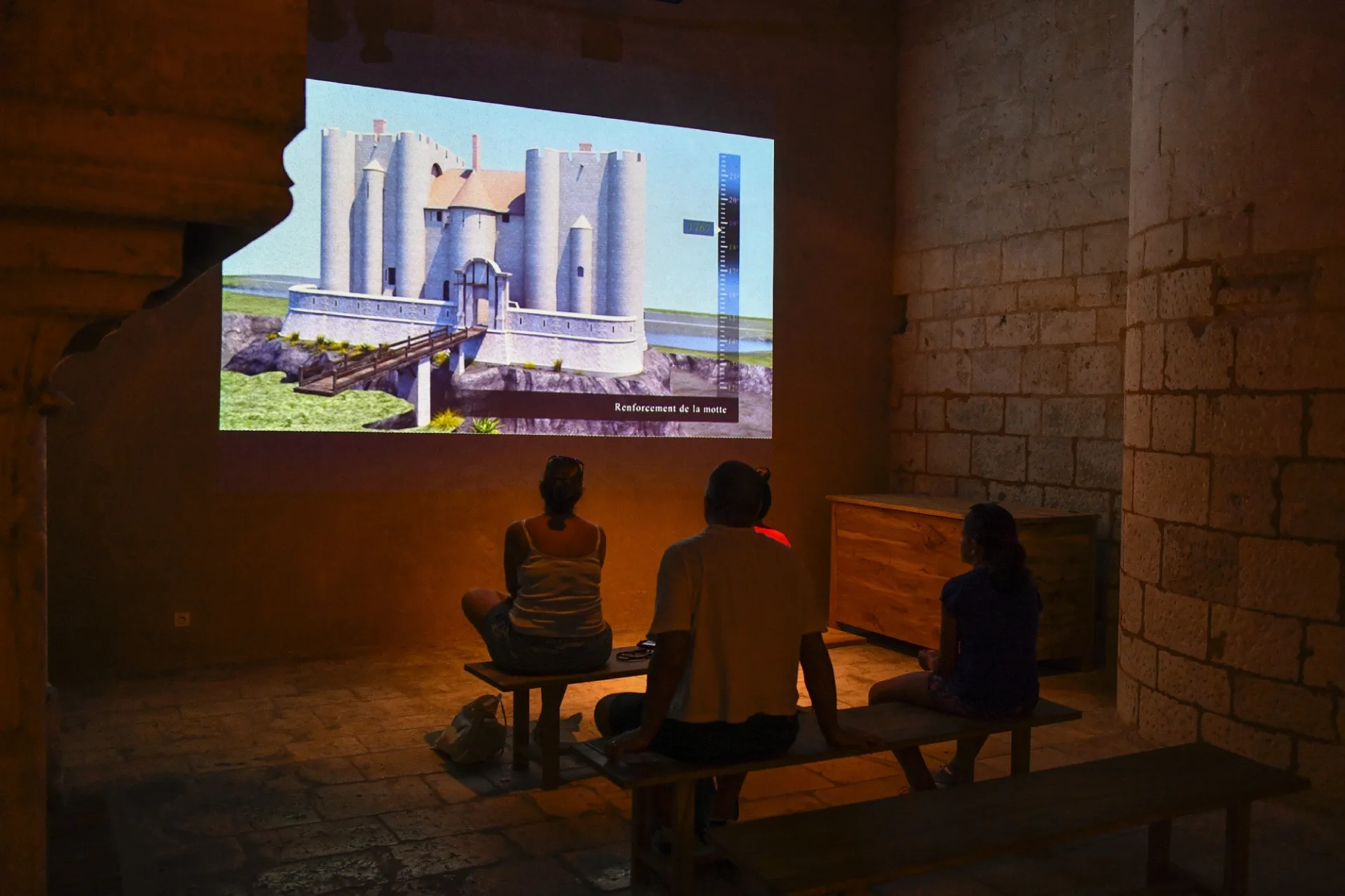
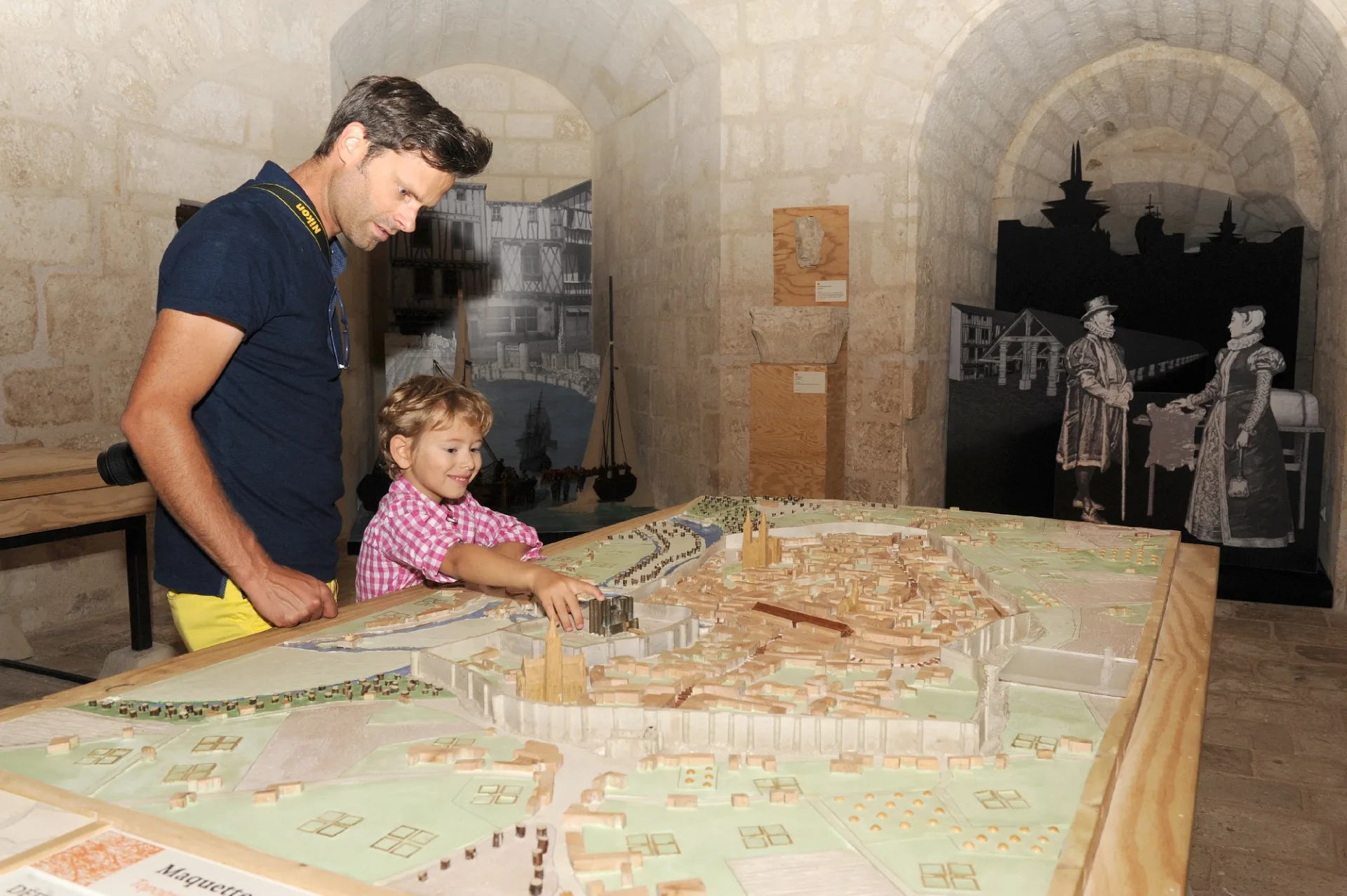
Collections ethnographiques
Parmi les collections ethnographiques, retrouvez à l’intérieur de la salle sous charpente, une collection de mobilier traditionnel poitevin dont de nombreuses armoires en bois massif.
C’est aussi l’occasion de découvrir comment vivaient les habitants à l’époque avec la reconstitution de l’intérieur d’un habitat poitevin de la deuxième moitié du XIXème siècle. Autrefois, tout était concentré dans une seule et unique pièce. On y retrouve le lit, proche de la cheminée pour se réchauffer, cheminée qui servait aussi à cuisiner avec une grande table au centre de la pièce pour partager des moments en famille.
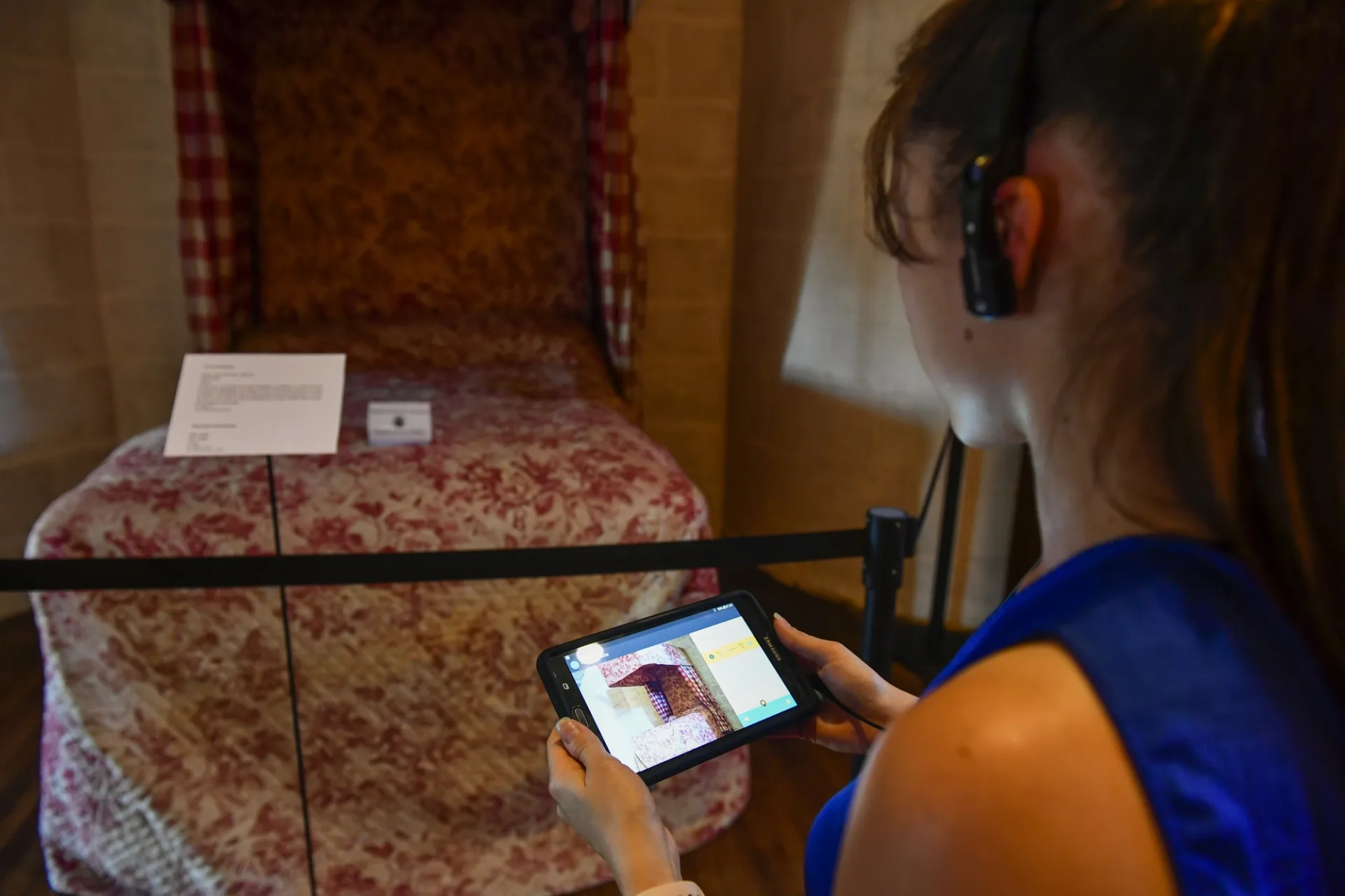
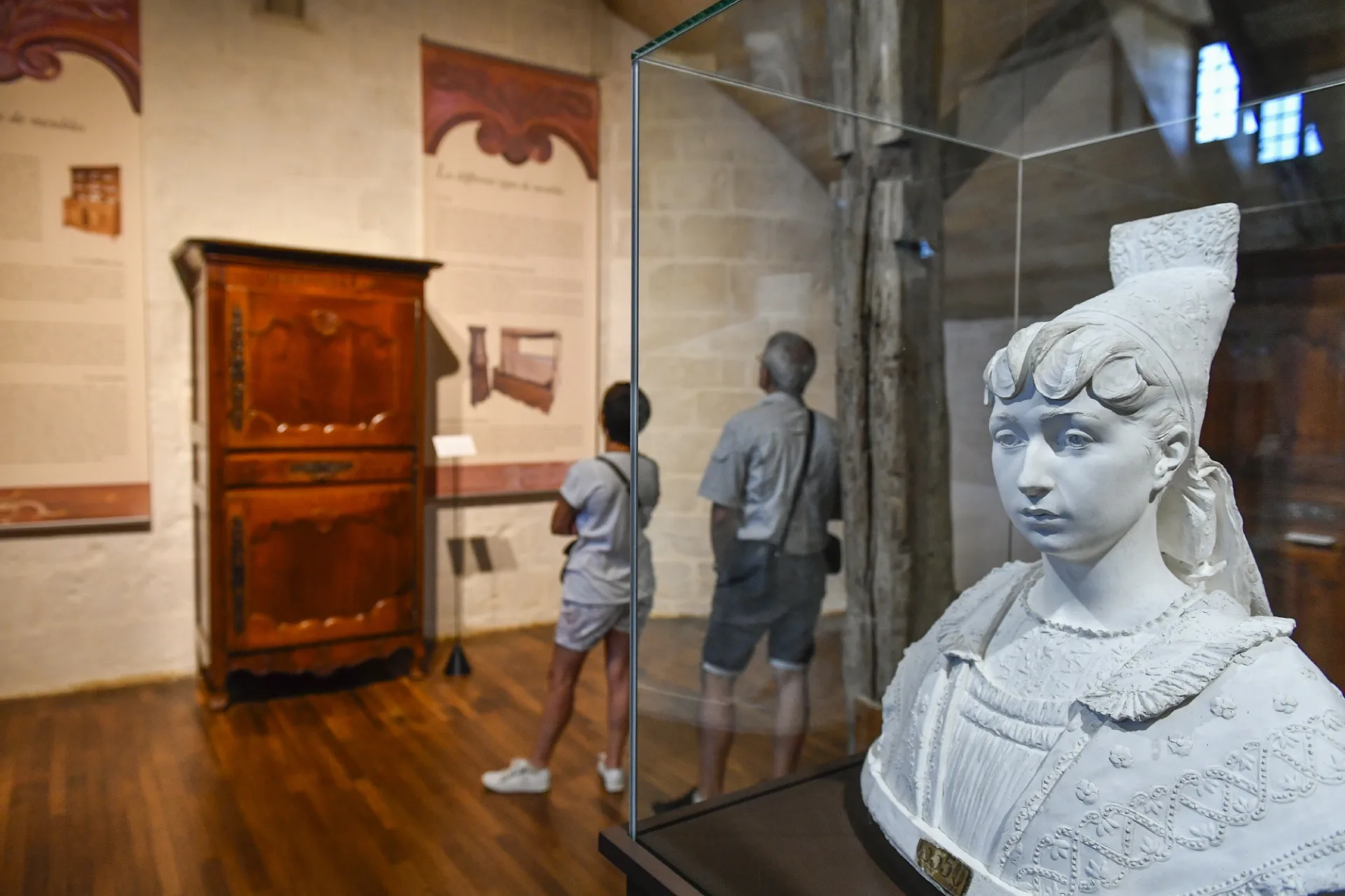
Collections archéologiques
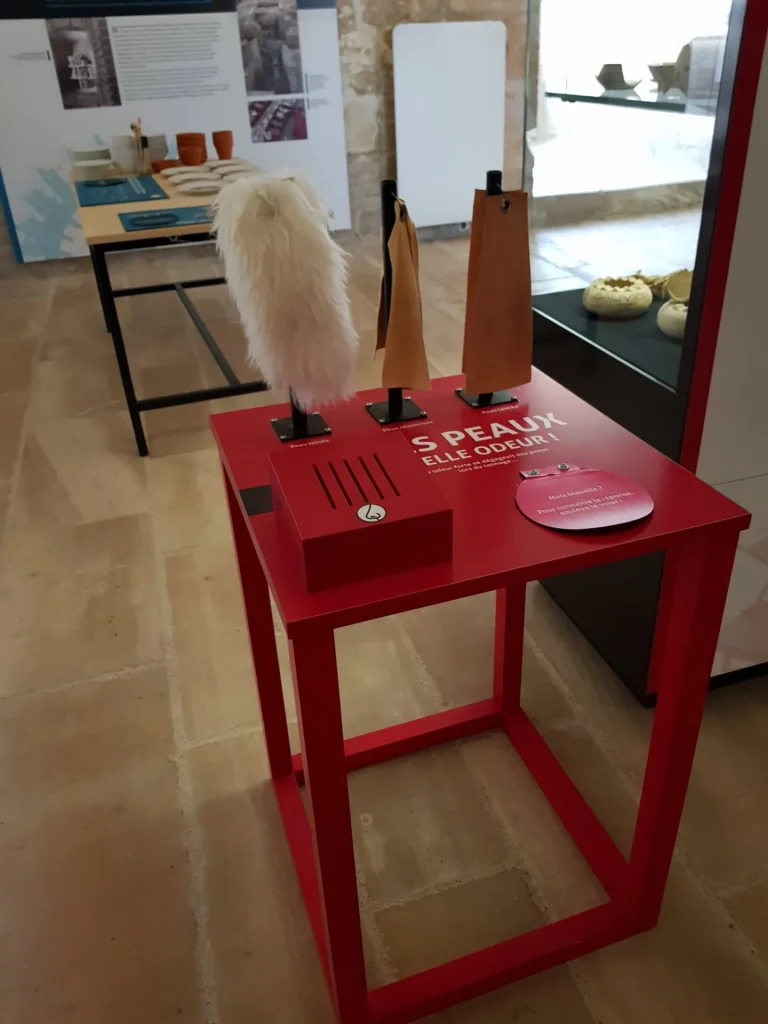
Rendez-vous dans les salles les plus basses du Donjon : le cachot noir, la salle basse et le cachot clair.
Dans le cachot noir, vous pourrez retrouver quelques objets issus des fouilles effectuées en 2009 sur l’actuel parking du Moulin du milieu. Elles ont permis de retracer l’histoire depuis le XVe siècle de ce moulin établi sur la Sèvre et détruit avec son quartier dans les années 1960.
Dans la salle basse, une exposition sur les activités industrielles et artisanales liées à ce moulin est présentée.
En résumé :
- Le cachot noir : présente l’histoire et l’évolution du Moulin du Milieu
- La salle basse centrale : présente les activités artisanales et industrielles
- Le cachot clair : fait un focus sur la Sèvre Niortaise
La terrasse avec vue panoramique
Devenez le roi ou la reine du Donjon le temps d’un instant ! Lorsque vous accéderez à la terrasse du Donjon, ce sentiment d’être au-dessus des toits de la ville vous ébahira. Un incroyable panorama à 360° vous attend. Une table d’orientation vous permettra de vous situer dans la ville et au-delà.
